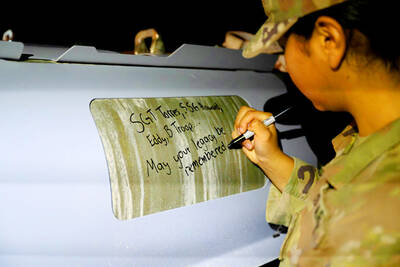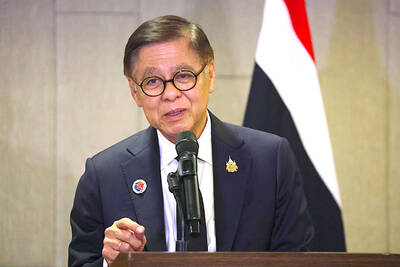One of Africa's most-feared militias has crumbled and now faces the wrath of the population it terrorized. The mayi-mayi, warrior-mystics who have ravaged the Democratic Republic of Congo for 10 years, are surrendering in droves.
Exhausted and hungry, in recent weeks entire units have emerged from the jungles of one of their last redoubts, Katanga Province, to lay down weapons and plead forgiveness.
For hunters who used spears and arrows as well as guns to slaughter thousands, it is now their turn to be hunted. There is pressure for the leaders to be tried for war crimes and a backlash against the soldiers and their families.
Other armed groups still prowl volatile eastern provinces, but the end of the mayi-mayi in Katanga is a significant boost to stability and should open the countryside to aid agencies tackling one of the world's worst humanitarian crises.
"One can no longer speak of the mayi-mayi as a political force. Their influence and visibility have greatly diminished," said Kisula Ngoy, Katanga's governor.
The Congolese army and UN troops swept through their strongholds and splintered the once mighty militia into ragged bands to prepare the country for an election scheduled for July 30.
The campaign has been controversial -- the Observer revealed last month how UN troops participated in the destruction of civilian hamlets -- and the UN has launched an investigation.
However flawed, the offensive has broken the mayi-mayi.
"You could see it when they surrendered," said Gerson Brandao, a senior official with the UN's Office for the Coordination of Humanitarian Affairs, which helps to demobilize combatants. "They couldn't keep running any more, they were exhausted."
Hundreds of guerrillas have flooded demobilization centers in remote towns such as Dubie and Mitwabe, performing elaborate and emotional ceremonies as they remove amulets credited with magical powers. Some wept, others looked resigned, as they handed over bracelets and pouches which supposedly rendered them invisible and bulletproof.
"There are remnants still hiding in the bush ambushing people, but the militia as such has no military strength. It's the end of the mayi-mayi phenomenon in Katanga," Brandao said.
It is an ignominious demise for what was hailed as a patriotic force at the outset of the 1998-2003 war, a murderous affair involving six foreign armies and myriad homegrown groups which left 4 million dead, mostly from hunger and disease.
To repel Rwandan and Ugandan troops President Laurent Kabila turned to tribes of hunters and farmers loosely known as the mayi-mayi. With cursory training and AK-47 assault rifles, the militia had some success, bolstering a widespread belief that its fighters had magical powers, a superstition which paralyzed some opponents.
Foreign forces withdrew with the war's official end in 2003, but the mayi-mayi, fractious and lacking effective command, missed out in the transitional government's carve-up of power and spoils. Alienated from its former sponsors in the capital, Kinshasa, the militia laid waste swaths of eastern Congo for three years, displacing hundreds of thousands and making a mockery of the supposed peace.
"In some cases the mayi-mayi publicly tortured victims before killing them in public ceremonies meant to terrorize the local population," said the New York-based watchdog Human Rights Watch.
Now the worm has turned. Lacking popular support, political allies and a driving ideology, the militia in Katanga crumbled when confronted by Congolese troops.
A key turning point was the surrender in May of the most influential warlord, Kyungu Mutanga, better known as Gedeon.
Claiming to have communed with the ghost of his late mentor, Laurent Kabila, Gedeon ordered his 150 followers, many of them child-soldiers, to hand over amulets and charms along with their weapons.

REVENGE: Trump said he had the support of the Syrian government for the strikes, which took place in response to an Islamic State attack on US soldiers last week The US launched large-scale airstrikes on more than 70 targets across Syria, the Pentagon said on Friday, fulfilling US President Donald Trump’s vow to strike back after the killing of two US soldiers. “This is not the beginning of a war — it is a declaration of vengeance,” US Secretary of Defense Pete Hegseth wrote on social media. “Today, we hunted and we killed our enemies. Lots of them. And we will continue.” The US Central Command said that fighter jets, attack helicopters and artillery targeted ISIS infrastructure and weapon sites. “All terrorists who are evil enough to attack Americans are hereby warned

‘POLITICAL LOYALTY’: The move breaks with decades of precedent among US administrations, which have tended to leave career ambassadors in their posts US President Donald Trump’s administration has ordered dozens of US ambassadors to step down, people familiar with the matter said, a precedent-breaking recall that would leave embassies abroad without US Senate-confirmed leadership. The envoys, career diplomats who were almost all named to their jobs under former US president Joe Biden, were told over the phone in the past few days they needed to depart in the next few weeks, the people said. They would not be fired, but finding new roles would be a challenge given that many are far along in their careers and opportunities for senior diplomats can

Seven wild Asiatic elephants were killed and a calf was injured when a high-speed passenger train collided with a herd crossing the tracks in India’s northeastern state of Assam early yesterday, local authorities said. The train driver spotted the herd of about 100 elephants and used the emergency brakes, but the train still hit some of the animals, Indian Railways spokesman Kapinjal Kishore Sharma told reporters. Five train coaches and the engine derailed following the impact, but there were no human casualties, Sharma said. Veterinarians carried out autopsies on the dead elephants, which were to be buried later in the day. The accident site

RUSHED: The US pushed for the October deal to be ready for a ceremony with Trump, but sometimes it takes time to create an agreement that can hold, a Thai official said Defense officials from Thailand and Cambodia are to meet tomorrow to discuss the possibility of resuming a ceasefire between the two countries, Thailand’s top diplomat said yesterday, as border fighting entered a third week. A ceasefire agreement in October was rushed to ensure it could be witnessed by US President Donald Trump and lacked sufficient details to ensure the deal to end the armed conflict would hold, Thai Minister of Foreign Affairs Sihasak Phuangketkeow said after an ASEAN foreign ministers’ meeting in Kuala Lumpur. The two countries agreed to hold talks using their General Border Committee, an established bilateral mechanism, with Thailand